Amphenol/Franklin Power Products in Franklin, Ind.
EPA and the Indiana Department of Environmental Management (IDEM) are coordinating their efforts to respond to contaminated sites in Franklin and Johnson County, Ind. In Franklin, IDEM has identified several sites and is responding through its State Cleanup Program. EPA’s current efforts in Franklin are focused on the Amphenol site, which is being cleaned up under the authority of the federal Resource Conservation and Recovery Act.
The agencies have conducted extensive sampling of the air, groundwater, soil, sewers, and in people’s homes. Although contamination has been detected, the contaminated areas are isolated (not connected underground via groundwater).
A sewer replacement effort will combine replacement or re-lining of damaged sewers with the removal of contamination from the Amphenol site that has lodged around the old sewers. Both projects will be conducted at the same time. Although not related to the sanitary sewer work, private utility companies may be replacing the water mains and gas lines in this area around the same time. Work is expected to begin in the fall of 2019.
Zoning Ordinance
Fats, Oils & Grease Program
FATS, OILS AND GREASE (FOG) PROGRAM
The Fats, Oils, and Grease (FOG) Program is focused on protecting the community’s sanitary sewer infrastructure by preventing clogs and backups resulting from improper disposal of FOG. FOG commonly finds its way into the sewer system through drains, toilets, and dishwashers from homes, restaurants, and businesses. When FOG enters the sewer lines, it solidifies and builds up, reducing the amount of flow through the pipes. This can create large clogs over time that lead to sanitary sewer overflows (SSOs) causing sewage to back up into homes and businesses, or overflow into community waterbodies.
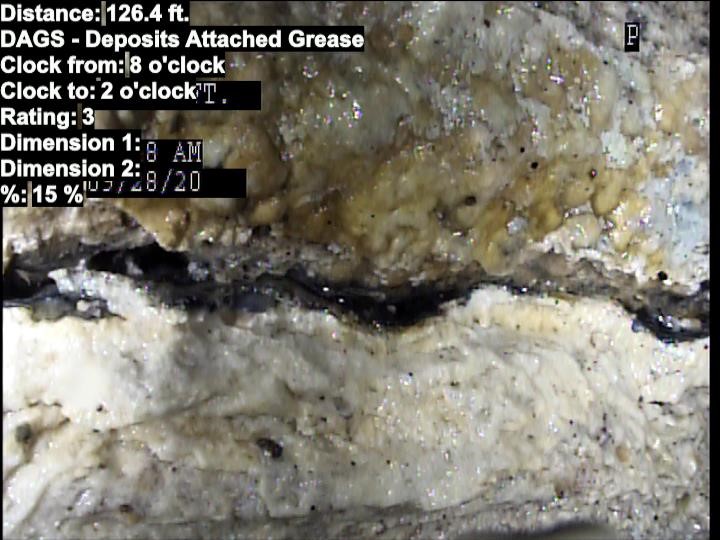
SOURCES OF FOG
FOG in households and businesses come from a variety of sources, such as:
- Baked goods
- Butter & margarine
- Cooking oil
- Dairy products
- Foods cooked in deep fryers
- Lard
- Mayonnaise
- Meats
- Pastries
- Salad dressings
- Sauces & gravy
- Shortening
RESIDENTIAL FOG
Protecting the sanitary sewer infrastructure by reducing FOG is critical to protect the health of residents and the community. It is also important to understand that preventing these items from entering the sanitary sewer system is far more effective and less expensive than replacing damaged equipment and infrastructure, cleaning up unwanted SSOs, or cleaning your home of backflows. Public support depends on public awareness, so the community needs to know what practices can be implemented to reduce FOG in our sanitary sewer system. Through cooperation between the citizens in the community, local businesses, and the Public Works Department, a collective approach will lead to a dependable sanitary sewer system.
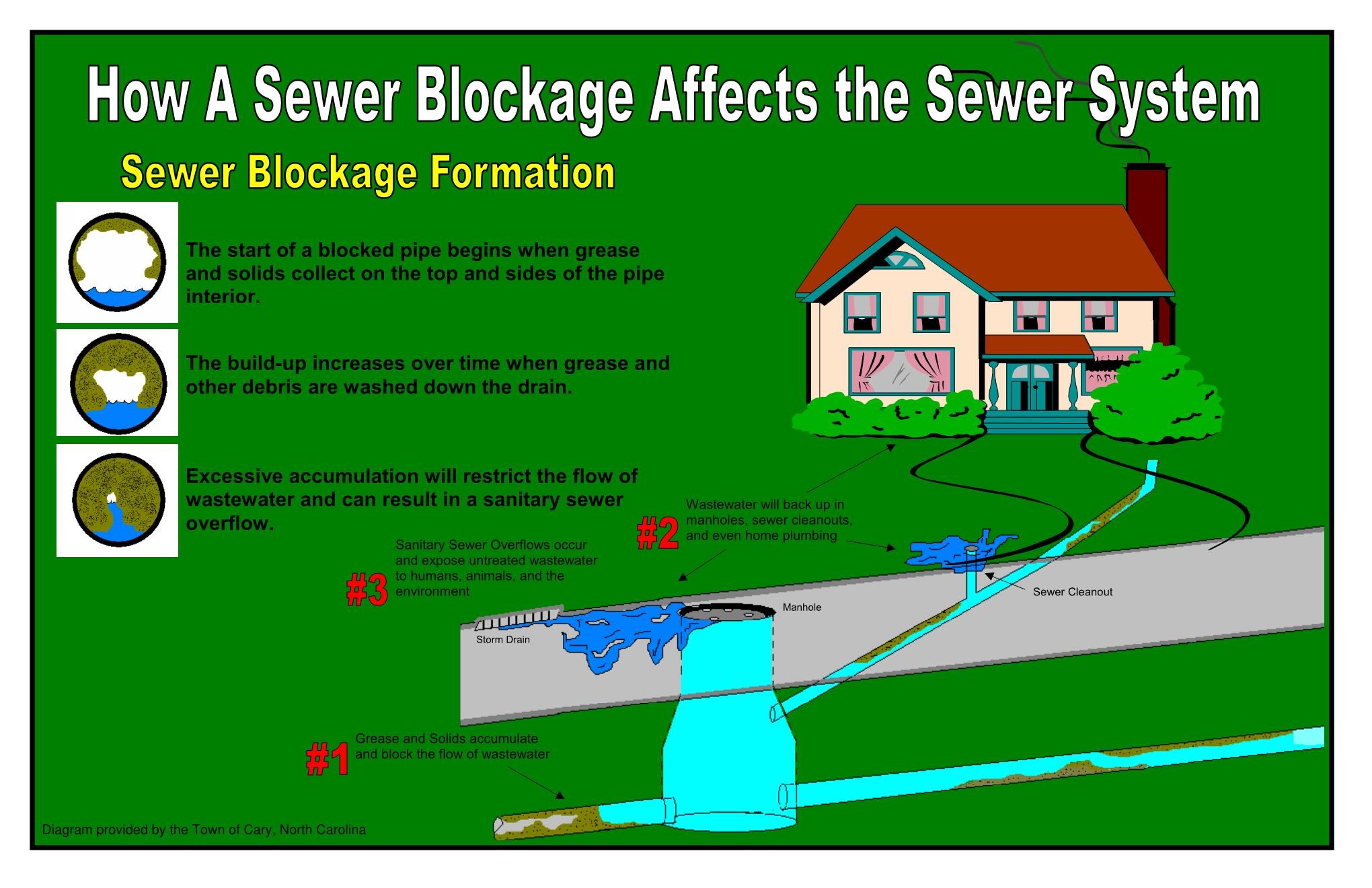
PROPER DISPOSAL TIPS
FOG not only builds up throughout the sanitary sewer system, but within your home’s sanitary lateral as well. A sewer lateral is the underground pipe that connects a residence or business to the City’s sanitary sewer line. If your lateral is clogged with FOG, it is the responsibility of the property owner to maintain.
Homeowners can reduce the amount of FOG entering the sanitary sewer system by using proper clean-up and disposal methods.
- Let oils cool and pour excess cooking oil into a heat-proof, sealable container and throw the container in the trash. Ensure that the container is sealed tightly before throwing it away.
- TIP: Continue adding grease and oil until the container is full, and the oil is solidified before throwing it away.
- TIP: Mix oil with an absorbent material such as coffee grounds, place in a tightly sealed container and dispose of in the trash.
- Scrape food scraps into the trash. Wipe excess oil and grease left on pans and dishes into the trash with a paper towel before washing.
- Use a mesh sink strainer to catch food items and dispose of scraps in the trash.
It is also important to follow these tips to reduce FOG accumulation:
- Minimize the use of garbage disposals or food grinders. These systems allow FOG to enter the sanitary sewer system from food scraps that should be placed in the trash.
- Do not pour cooking oil, grease, dressings, or sauces down the sink.
- Do not use cloth towels and rags to wipe or clean oil and grease off dishes. When these towels and rags are washed, the FOG enters the sanitary sewer through the clothes washer.
- Use paper towels to clean up any spills of oils, grease, or food items containing FOG and throw the paper towels in the trash.
Food service establishment (FSE) FOG
Restaurants, cafeterias, hospitals, schools, and other FSEs can be a large contributor of FOG in the sanitary sewer system. FOG may find its way into the sanitary sewer from the dishwasher, floor drains, or a mop bucket. Pouring or washing FOG down the drain leads to the FOG solidifying in the pipes and restricting flow from the kitchen and bathrooms causing sewage to back up into the business or cafeteria. This is called a sanitary sewer overflow (SSO). SSOs are expensive and time-consuming to clean up and impacts a business directly by causing foul odors, complaints, and may lead to closures. Additionally, per the City of Franklin’s Sewer Use Ordinance (Section 13.04.330), grease, oil, and sand interceptors or traps are required to properly handle FOG from entering the sanitary sewer system. Below is a picture of actual footage from Franklin DPW televising a sanitary sewer downstream of local restaurants that shows FOG accumulation.
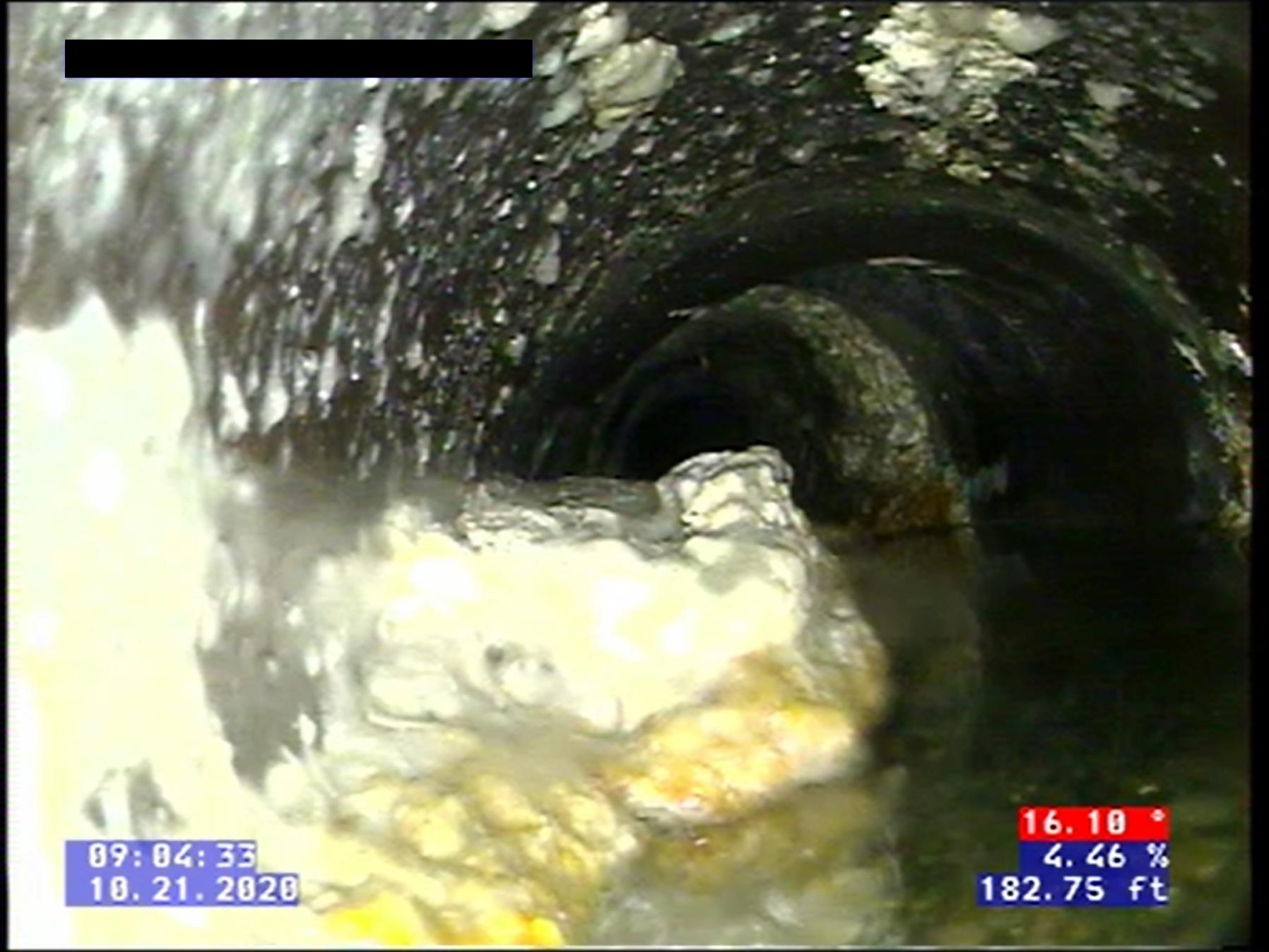
In addition to approval through the Johnson County Health Department, all new and renovated FSEs are required to obtain approval through the City of Franklin. New FSEs must complete the Food Service Establishments Survey and submit it to the Planning and Engineering Department at least 30 days before installing a grease/oil trap or interceptor. Renovated FSEs must submit the survey 60 days before opening or the installation/renovation of an existing interceptor or trap. Surveys and attachments can be submitted via mail to the City of Franklin at 70 E Monroe St., Franklin, IN 46131.
GREASE MANAGEMENT AND DISPOSAL TIPS
Implement the following in your restaurant or cafeteria to prevent FOG from entering the sewer system:
- Do not use hot water and soap to try to wash grease down the drain. It will eventually cool and harden in the sewer lines.
- Do not put liquid foods like gravy, milk, shakes, or batter containing FOG down the drain.
- Do not put FOG or food down the drain.
- Do not wash pots, pans, utensils, etc. until FOG and food scraps have been wiped away.
- Pour cooled grease into a vendor’s recycling container. Some local vendors include Republic Services, Mahoney Environmental, Indianapolis Grease Trap Services, Restaurant Technologies, or other reputable grease disposal companies.
- Pour cooled grease into a closable container, seal it, and place it in the trash.
- Mix cooking oils with absorbent material such as coffee grounds or cat litter. Place in a tightly lidded container and dispose of it in the garbage.
- Wipe or scrape food particles from pots, pans, and dishes into the trash before placing them in the sink for washing.
- Wipe excess fats and grease from pans with a paper towel and toss in the garbage.
- Always use sink basket strainers to capture food scraps and empty them into a trash can.
- Use disposable towels to wipe down work areas.
- Collect and empty grill scrapings and fryer vat grease into a grease recycling container.
FSE BEST MANAGEMENT PRACTICES (BMPs)
- Install and maintain a grease removal device.
- The grease removal device shall be properly sized for the establishment.
- Do not allow water over 140 degrees F to enter the grease removal device - water above this temperature will dissolve grease and send it through the device into the sewer where it can solidify and cause a clog.
- Do not use garbage disposals or, install a solids interceptor after a garbage disposal to reduce the amount of solids in the grease removal device.
- Recycle or dispose of waste cooking oil using a waste hauler; keep oil storage containers covered and maintained.
- Install fine mesh screens in all kitchen drains to prevent food scraps from entering the grease removal device and the sewer system. Solids take up capacity in the grease removal device, reducing solids will result in less frequent cleaning.
- Scrape and dry wipe all dishes, pots, and pans into the trash before rinsing or washing.
- Post “Dump No Grease” signs above sinks and dishwashers in the kitchen to discourage the dumping of oil and grease.
- Train employees on BMPs and the importance of reducing the amount of grease that goes down the drains.
GREASE REMOVAL DEVICE CLEANING TIPS
- Clean when FOG reaches 25% capacity of grease removal device and develop a regular cleaning schedule. A grease removal device will not meet performance standards once the accumulation of floatable FOG material and settled solids have reached a depth equal to or greater than 25 percent of the total operating depth of the grease removal device.
- If grease removal device is too full at scheduled cleaning time, increase cleaning frequency.
- Ensure an employee or manager oversees all maintenance and cleaning activities to ensure that the device is cleaned out thoroughly and that is operating properly.
- Keep a log of maintenance and cleaning activities.
For more information and tips for reducing FOG in FSEs, see the materials below:
- National Restaurant Association – New FOG Toolkit
- USEPA – Controlling FOG from FSEs
- City of Franklin – Fat-Free Sewers
- City of Franklin – Keep it Out of Your Drain
- City of Franklin – FSE Fight FOG Poster (English, Spanish, Chinese)
- National Restaurant Association – Managing Fats, Oils and Grease Poster (English, Spanish)
FOG FACTS
Residential:
Why can’t I pour used cooking oil down the drain?
Cooking oil and grease poured down drains can build up in pipes causing backups at home, into streets, and the storm drain system. Proper disposal of your cooking oil and other greases and fats will help prevent a sewage backup in your home.
Can I use my garbage disposal, hot water, or detergent to wash grease down the drain?
These practices won’t prevent grease from building up in sewer pipes. Home garbage disposals do not remove grease from the plumbing system. Hot water will keep the grease in liquid form long enough to enter the sanitary sewer lines where the grease cools and sticks to the pipe walls. Detergents that claim to dissolve grease may cause blockages to occur further down the pipeline.
Can I dispose of cooking oil in the trash?
Small amounts of grease and oil can be placed in tightly sealed, unbreakable containers in the trash. However, it is not recommended to dispose of large amounts of grease or oil in the trash as containers may leak.
How do I reduce the amount of FOG entering the sanitary sewer?
Scrape excess food waste from pots and pans into the garbage after cooking. Wipe pots, pans, and cookware clean with a disposable towel before washing. You can dispose of small amounts of fats, oil, and grease in tightly sealed containers in the trash.
Commercial/Food Service Establishments:
Does my facility require a Grease Trap or Interceptor?
All Food Service Establishments shall be equipped with a grease removal device designed to limit the discharge of grease and oil to the sewer system.
What size Grease Removal Device is required?
- Grease removal device sizing for FSEs is subject to review and approval by City of Franklin.
- Small, low grease producing FSEs, such as delicatessens, bakeries/donut shops, ice cream/frozen yogurt shops, coffee shops, and other FSEs with limited cooking that do not contain deep fryers, grills, or other cooking equipment.
- Larger, high grease-producing FSEs such as full-service, high-capacity FSEs, will require an outside grease removal device.
- Grease trap and/or interceptor sizing for FSEs are subject to review and approval by the City of Franklin.
Which fixtures/drains are required to be connected to the Grease Removal Device?
All potential grease bearing fixtures and drains (cooking equipment drains, pot sinks, 3-compartment sinks, mop sinks, dishwasher pre-rinse sinks, prep sinks, floor sinks, floor drains) in the food preparation, cooking, and clean up areas of the facility are required to be connected to the grease trap or interceptor.
Can dishwasher drainage be connected to the Grease Removal Device?
No dishwashers are to be connected to drainage pipes conveying wastewater to an interceptor or any other grease removal device. (Note: the dishwasher pre-rinse sink must be connected to the Grease Removal Device).
Why should I maintain my grease removal device and reduce the amount of grease going down the drain?
- Grease can build up in the sewer system, causing clogs and potentially backups into your business or other facilities in the community. This health hazard can attract unwanted smells or insects, costly cleanups, and even property damage.
- Clogged sanitary sewer lines need to be cleaned, the more clogged lines the higher the cost to maintain them which can directly impact taxpayers.
- Less FOG and solids entering your grease removal device results in less frequent cleaning and reduced maintenance costs for the facility.
May I use chemicals, enzymes, or bacteria in my grease control mechanism or my drains?
The use of enzymes, emulsifying chemicals, hot water, or other agents as a grease abatement method is not approved in grease removal devices or drains. These chemicals keep the FOG in liquid form long enough to enter the sanitary sewer lines where the grease cools and sticks to the pipe walls. This has the potential to cause a serious blockage and sanitary sewer overflow.
How often should my Grease Removal Device be cleaned?
Grease removal devices need to be pumped out regularly, on a schedule determined by how quickly they fill. When over 25% of the interceptor is full of grease, the interceptor loses effectiveness; at 50%, the interceptor lets most FOG flow through into the sewer.
OTHER RESOURCES
Johnson County Health Department:
Johnson County Recycling District
Indiana Retail Food Code (Title 410 IAC 7-24) – grease trap requirements under 410 IAC 7-24, Sections 374 through 380.
EDUCATIONAL VIDEOS
Fats, Oils, and Grease: The Right and Wrong Way to Dispose of FOG - Bing video
Fats, Oils and Grease Explainer Video - YouTube
FOG (Fats, Oil and Grease) - YouTube
FOG... Fats, Oil and Grease..... - YouTube
FOG - Fats, Oils and Greases - YouTube
Clear Water Reduction Program
The City of Franklin is currently working to reduce the amount of excess water that flows into the sanitary sewer system from groundwater and stormwater sources. This excess water enters the sanitary sewers through holes, cracks, and joint failures (infiltration), or via roof drain downspout connections, foundation drains, sump pumps, and storm drain cross-connections (inflow). This water is not meant to be in the sanitary sewer system, as it comes from “clear” or “clean” sources of water. This Clear Water may also be called inflow and infiltration or I & I.
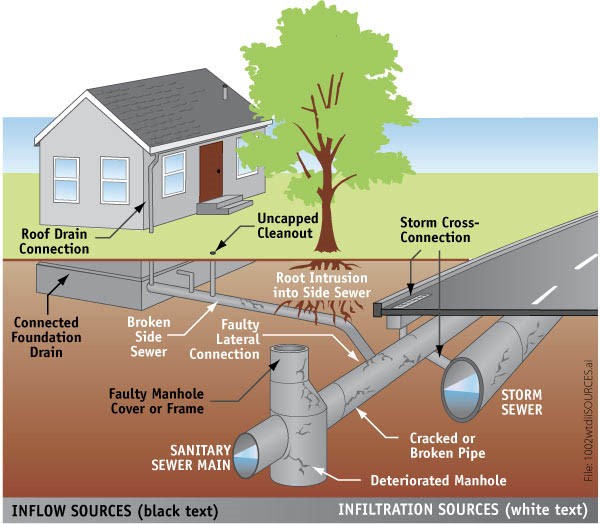
|
Infiltration Example – a crack in the sanitary sewer pipe allowing groundwater into the system (picture provided by City of Oregon, OH). |
Inflow Example – improper downspout connection to sanitary sewer (picture provided by Milwaukee Metropolitan Sewage District). |
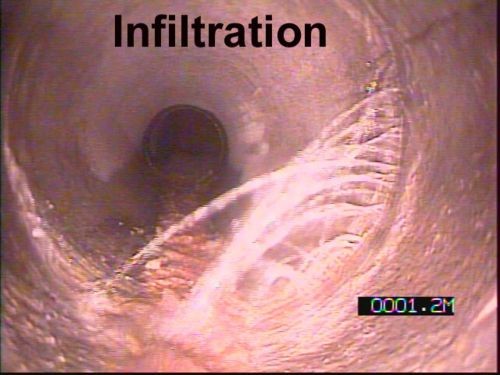
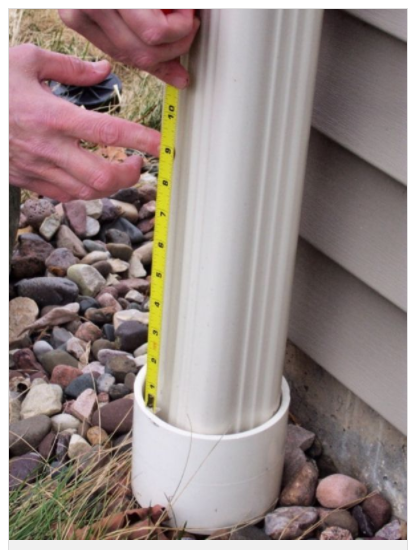
What is the Difference Between the Sanitary Sewer and Storm Sewer Systems?
The storm sewer system consists of catch basins, inlets, and conveyance pipes that collect and transfer stormwater from rainfall and snow melt from streets, yards, buildings, and parking lots and then discharges it to local streams and rivers. Sanitary sewers collect wastewater from toilets, sinks, and washing machines through a property owner’s sanitary sewer lateral. A sanitary sewer lateral is the underground pipe that connects a residence or business to the City’s sanitary sewer line. The sanitary sewer transports wastewater to the wastewater treatment facility where it is treated to remove pollutants before being returned to the environment.
|
Sanitary Sewer Manhole |
Stormwater Inlet |
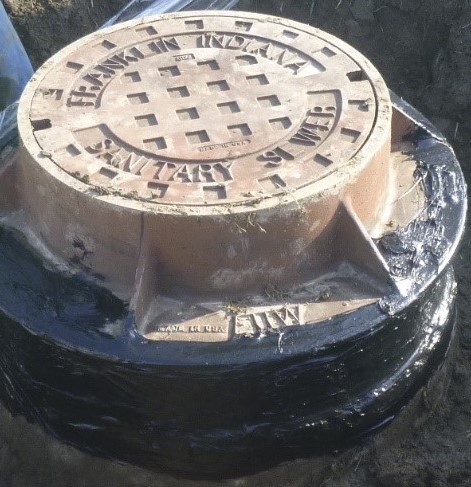
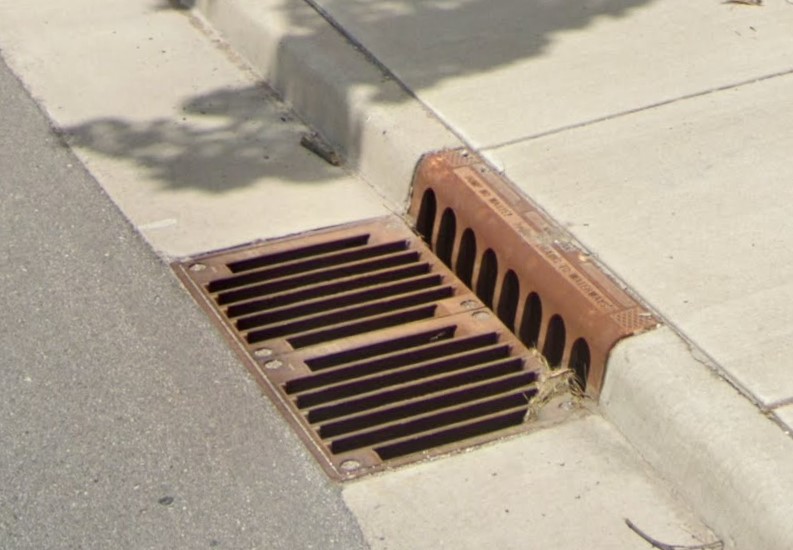
Impacts of Clear Water in the Sanitary Sewer System
Sanitary sewer systems are designed to handle sanitary flows. Excess flows from improper connections, infiltration, or inflow of groundwater to the sanitary sewer system reduces the capacity of the sewer and can overload it. The cost of infiltration and inflow from Clear Water sources, when not corrected, impacts the public directly. Communities should be concerned about Clear Water because it:
- Causes back-ups of sewers into streets and private properties which requires costly repairs and cleanup.
- Causes sanitary sewer overflows (SSOs) that can result in a release of untreated wastewater into waterbodies, directly impacting public health, aquatic life, and ecosystems.
- Increases operation and treatment costs for the collections system and wastewater treatment plant to essentially clean Clear Water which incurs greater costs towards energy, maintenance, and repairs.
- Leads to the installation of larger pipes and wastewater treatment systems, which result in expensive capital projects.
City Activities:
To reduce the amount of excess water entering the system, the sources need to be identified. Identification of the issues will allow the City to develop a plan to fix the problem areas. At this time, Franklin Department of Public Works (DPW) has completed, or is in the process of completing, the following:
- Manhole rehabilitation to remove Clear Water sources.
- Coordination with customers to remove Clear Water sources.
- Conducting smoke testing, a method used to discover improper connections. Non-toxic smoke is injected into the sewer line and emerges from Clear Water sources to the sanitary sewer system that can be identified for correction.
- Conducting manhole inspections, a method used to identify and record inflow from defective manhole covers, structures and joints through visual inspection.
- Sewer televising where remotely guided cameras televise sewer lines to identify Clear Water sources, roots, and structural issues in the pipes.
- Cured-in-place-pipe (CIPP) lining of pipes. CIPP is a method used to repair existing pipes without having to perform excavation.
What Do I Need to Do as a Homeowner or Business Owner?
The City is currently performing public education on inflow and infiltration and improper connections of Clear Water sources to the sanitary sewer. The City is requesting customers evaluate their property for improper Clear Water connections and disconnect them if possible. Typically, the most common improper connections are found at a property owner’s sanitary sewer lateral. Disconnecting downspouts is usually easy. Refer to the instructional videos below on how to disconnect a downspout or how to connect a rain barrel to a downspout.
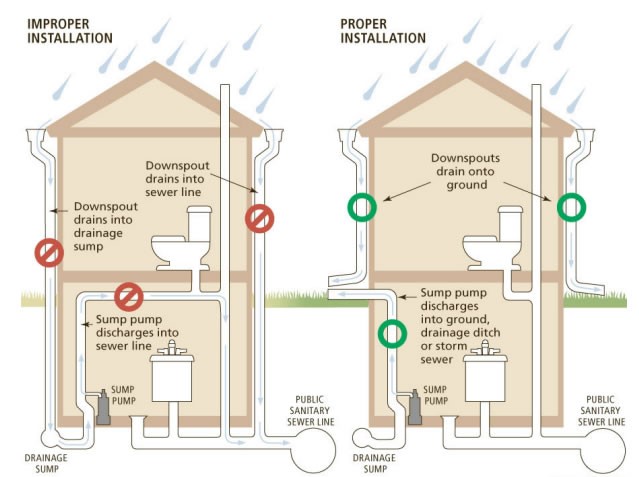
Why Do I Need to Do This?
Per the City of Franklin’s Sewer Use Ordinance, discharges of Clear Water through improper connections to the sanitary sewer are not allowed. These connections decrease sanitary sewer capacity and could lead to increases in utility fees and treatment costs. As a reminder, the operation and maintenance of a sewer lateral is the responsibility of the property owner
ADDITIONAL INFORMATION
City of Franklin – Clear Water Reduction Program Brochure
City of Franklin – Clear Water Reduction Program Brief
USEPA – Combined Sewer Overflow Technology Fact Sheet
EDUCATIONAL VIDEOS
Private Property Inflow and Infiltration - YouTube
Toronto Downspout Disconnect Instructional Video - Bing video
Recent News
- 2026 Public Art Advisory Commission Meeting Calendar
- 2026 Economic Development Commission Meeting Calendar
- Holiday Schedule for Solid Waste/Recycling Service
- BZA Agenda 11/05/2025 - CANCELED & CONTINUEDNovember 5, 2025 | CANCELED & CONTINUED to DECEMBER 3, 2025
- We Are Hiring!
Links
- Holiday Schedule for Solid Waste/Recycling Service
- November Chatter
- 2026 City of Franklin Employee Benefit Guide
- Which organization does what in Franklin?
- Bulk Item Guidelines
- 2025 Rental Prices
- Sewer Billing Rates
- City Council Adopts New Wastewater Utility Rates
- 2024 Tax Impact Analysis on Other Taxing Units
Upcoming Events
- Park Board Meeting00/20/254:00 pm - 11:59 pm
- Board of Public Works and Safety00/01/255:00 pm - 11:59 pm
- Common Council Meeting00/01/256:00 pm - 11:59 pm
- Board of Zoning Appeals00/03/256:00 pm - 11:59 pm
- Economic Development Commission00/09/258:00 am - 9:00 am
Contact Us
Mayor
- Phone: (317) 736-3602
- Staff Directory
- Hours: Monday-Friday
8:00 am to 4:00 pm
Contact Us
Franklin, IN 46131
- Staff Directory
- Hours: The City Council meets the first and third Monday of each month at 6:00 p.m. Meetings are open to the public, and held in City Hall, located at 70 E. Monroe Street.
Contact Us
Franklin, IN 46131
- Phone: (317) 736-3609
- Fax:
(317) 736-7244 - Staff Directory
- Hours: 8:00 a.m. - 4:00 p.m.
Contact Us
Director of Community Development
- Business: (877) 736-3631
- Business Fax:
(317) 736-5310 - Staff Directory
- Hours: 8:00 am - 4:00 pm
Monday - Friday
Contact Us
Chief
Franklin, IN 46131
- Business: (888) 736-3650
- Business Fax:
(317) 346-9885 - Staff Directory
- Hours: 8 a.m. - 4:30 p.m.
Contact Us
Director of Parks and Recreation
Franklin, IN 46131
- Business: (317) 736-3689
- Business Fax:
(317) 736-6200 - Staff Directory
- Hours: M-R: 5:30am-8pm
F: 5:30am-7pm
Sat: 8am-5pm
Sun: 12pm-5pm
Contact Us
Planning Director
Franklin, IN 46131
- Business: (877) 736-3631
- Fax:
(317) 736-5310 - Staff Directory
- Hours: 8:00 am - 4:00 pm
Monday - Friday
Contact Us
Franklin, IN 46131
- Phone: (317) 736-3670
- Other: (317) 346-1100
- Fax:
(317) 736-6840 - Other: (317) 346-6336
- Staff Directory
- Hours: Lobby Hours:
Monday - Friday, 8AM - 4PM
Closed Saturday, Sunday, Legal Holidays
***Airlock entryway/vestibule is open 24/7 for police/fire/emergency services***
Contact Us
Franklin, IN 46131
Contact Us
Franklin, IN 46131
Contact Us
Franklin, IN 46131
- Phone: (317) 736-3680
- Fax:
(317) 736-6854 - Staff Directory
Contact Us
Clerk
Franklin, IN 46131
- Phone: (317) 736-3619
- Fax:
(317) 346-9880 - Staff Directory
- Hours: Cashier available Monday through Friday from 9 a.m. to 12:00 p.m. and 1:00 p.m. to 4:00 p.m.
Contact Us
Contact Us
Contact Us
Franklin, IN 46131
Contact Us
Franklin, IN 46131
Contact Us
Contact Us
Franklin, IN 46131
- Business: (877) 736-3631
- Fax:
(317) 736-5310 - Staff Directory
- Hours: 8:00 a.m. - 4:00 p.m.
Contact Us
Franklin, IN 46131
- Staff Directory
- Hours: 8:00 a.m. to 4:00 p.m.
Contact Us
Director of Parks and Recreation
Contact Us
Assistant Superintendent
Franklin, IN 46131
- Phone: (317) 736-3696
- Staff Directory
- Hours: Monday - Friday 9am - 3pm
Contact Us
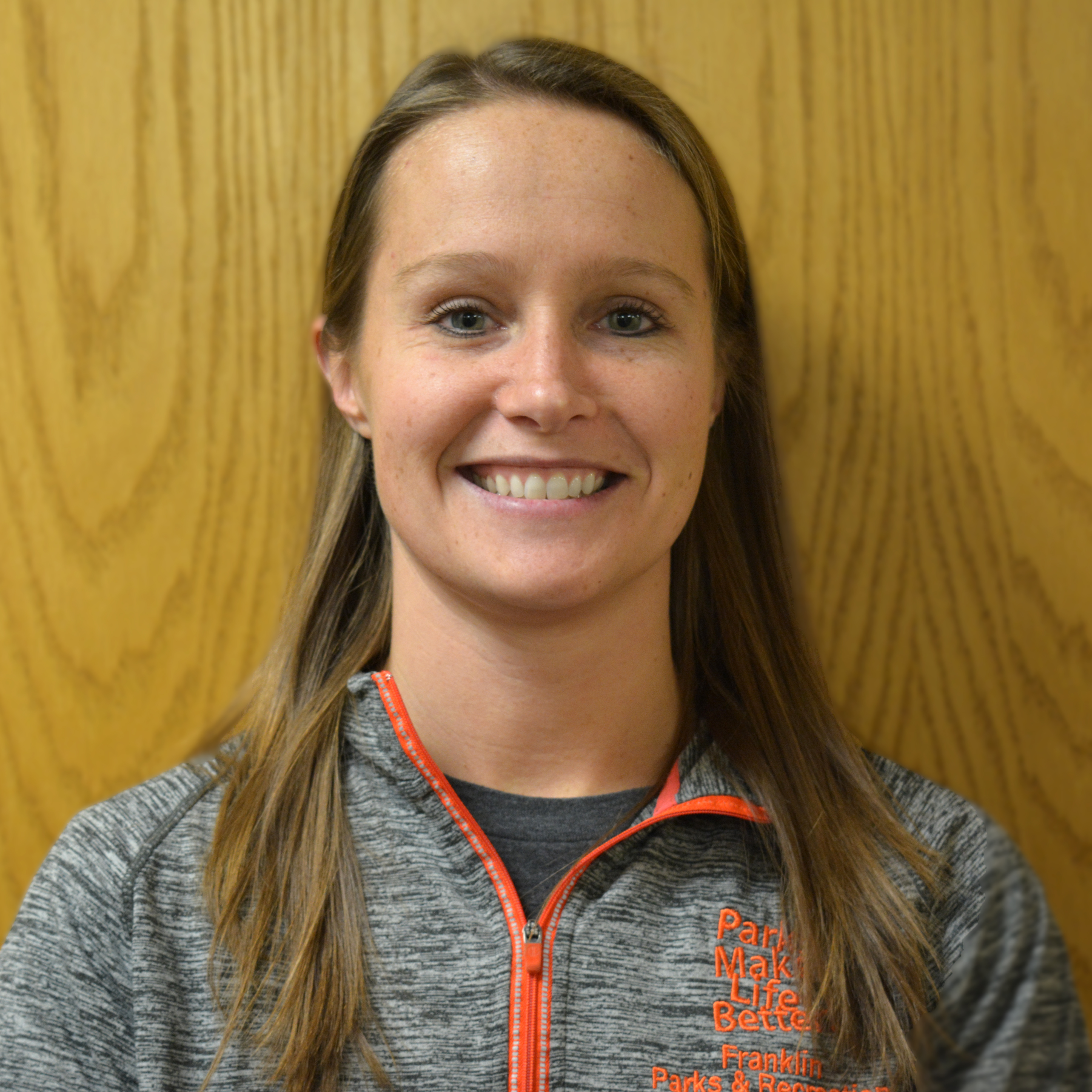
Facilities and Events Coordinator
Franklin, IN 46131
Contact Us
Assistant Superintendent
Franklin, IN 46131
- Staff Directory
- Hours: Access dawn-dusk
Contact Us

Facilities and Events Coordinator
Contact Us
Recreation/Events Coordinator
- Staff Directory
- Hours: May 23-August 5: 11-6 August 9-31st- Saturdays and Sundays: 11-6
Contact Us
Director of Parks and Recreation
Contact Us
Assistant Superintendent
Contact Us
Recreation/Events Coordinator
Franklin, IN 46131
Contact Us
Assistant Superintendent
Franklin, IN 46131
- Staff Directory
- Hours: M-R: 5:30am-8pm
F: 5:30am-7pm
Sat: 8am-5pm
Sun: 12pm-5pm
Contact Us
Franklin, IN 46131
- Staff Directory
- Hours: 8:00 - 4:00 Mon - Fri
Contact Us
Franklin, IN 46131
- Staff Directory
- Hours: 8:00 a.m. to 4:00 p.m. M-F
Contact Us
Franklin, IN 46131
Contact Us
Franklin, IN 46131
- Business: (317) 736-3631
- Business Fax:
(317) 736-5310 - Staff Directory
- Hours: 8:00 am - 4:00 pm
Contact Us
Franklin, IN 46131
Contact Us
Franklin, IN 46131
- Business: (317) 736-3660
- Staff Directory
Contact Us
- Staff Directory
- Hours: Monday - Friday 8 AM - 4 PM
Closed Saturday, Sunday, Legal Holidays
Contact Us
Billing Manager
Franklin, IN 46131
- Business: (888) 736-3640
- Business Fax:
(317) 736-6709 - Staff Directory
Contact Us
Street Commissioner
Franklin, IN 46131
- Phone: (317) 736-3660
- Fax:
(317) 346-9881 - Staff Directory
- Hours: Monday-Friday 7:00 am to 3:00 pm
Contact Us
Wastewater Superintendent
Franklin, IN 46131
- Business: (888) 736-3640
- Business Fax:
(317) 736-6709 - Staff Directory
Contact Us
Mayor
Franklin, IN 46131
- Business: (317) 736-3602
- Staff Directory
- Hours: The Board of Public Works and Safety meets the first and third Monday of each month, at 5:00 p.m. Meetings are held in City Hall, 70 E. Monroe Street
Contact Us
- Staff Directory
- Hours: 8:00 AM - 4:30 PM
Contact Us
Contact Us
MS4 Coordinator
Franklin, IN 46131
Contact Us
Contact Us

Recreation Coordinator
Contact Us
Director of Parks and Recreation
- Staff Directory
- Hours: M-R: 5:30am-8pm F: 5:30am-7pm Sat: 8am-5pm Sun: 12pm-5pm
Contact Us

Recreation Coordinator
Contact Us
Community Development Specialist
Franklin, IN 46131
- Phone: (317) 736-3631
- Staff Directory
- Hours: 8:00 AM to 4:00 PM
Contact Us
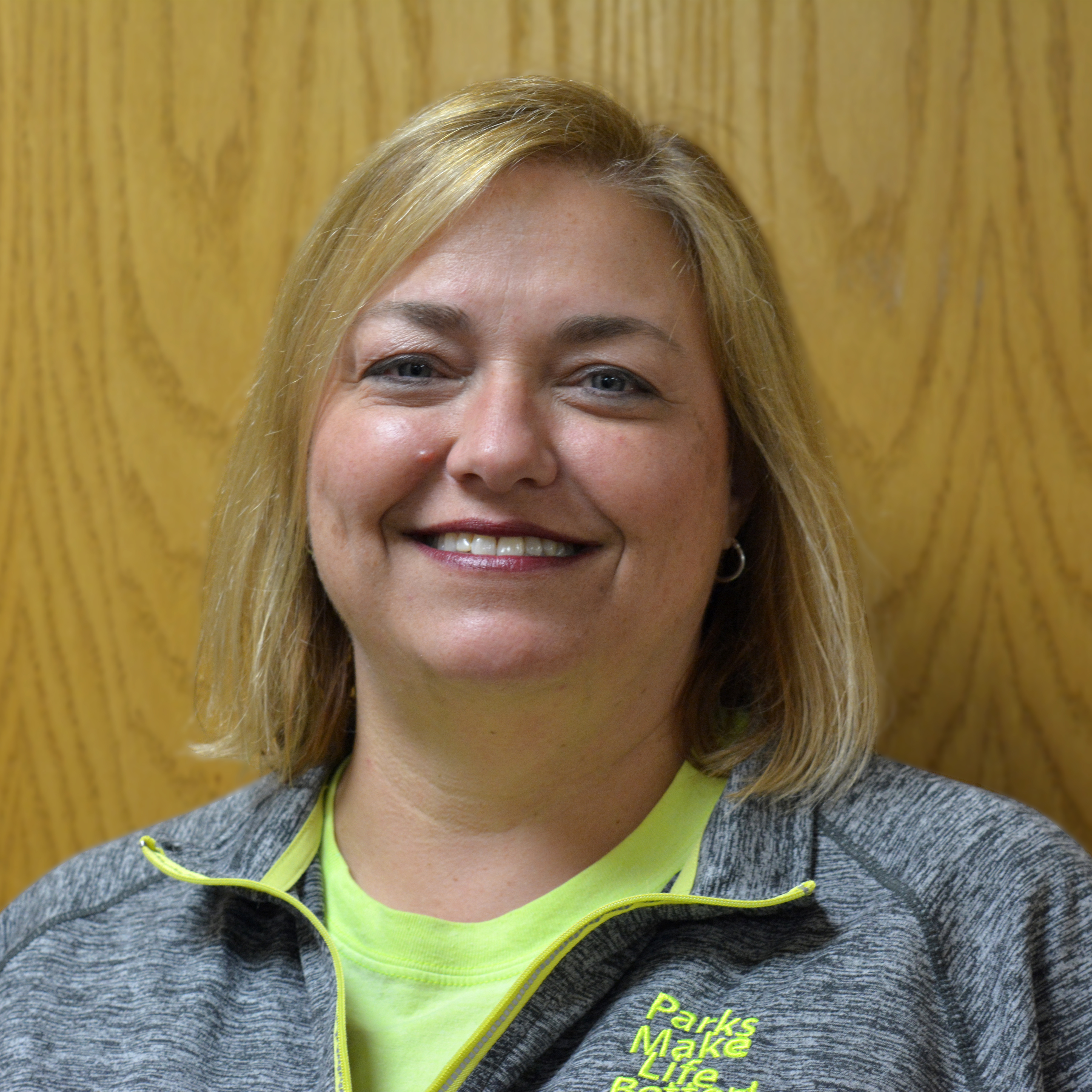
Recreation Director
- Staff Directory
- Hours: Spray Park Open 10am-Dusk
Contact Us
Director of Parks and Recreation